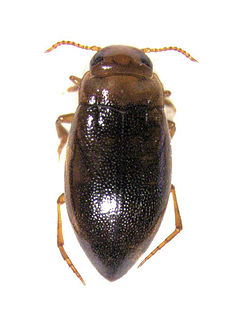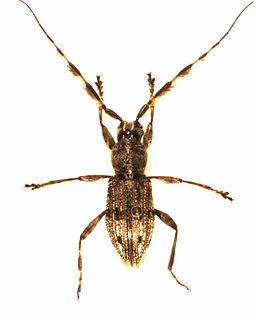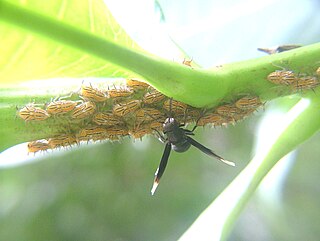Genus is a taxonomic rank used in the biological classification of living and fossil organisms as well as viruses. In the hierarchy of biological classification, genus comes above species and below family. In binomial nomenclature, the genus name forms the first part of the binomial species name for each species within the genus.

The International Union for Conservation of Nature (IUCN) Red List of Threatened Species, founded in 1964, is the world's most comprehensive inventory of the global conservation status of biological species. It uses a set of precise criteria to evaluate the extinction risk of thousands of species and subspecies. These criteria are relevant to all species and all regions of the world. With its strong scientific base, the IUCN Red List is recognized as the most authoritative guide to the status of biological diversity. A series of Regional Red Lists are produced by countries or organizations, which assess the risk of extinction to species within a political management unit.

The conservation status of a group of organisms indicates whether the group still exists and how likely the group is to become extinct in the near future. Many factors are taken into account when assessing conservation status: not simply the number of individuals remaining, but the overall increase or decrease in the population over time, breeding success rates, and known threats. Various systems of conservation status exist and are in use at international, multi-country, national and local levels as well as for consumer use.

Corythoichthys is a genus of pipefishes of the family Syngnathidae. All species in the genus are found in the tropical Indian and Pacific Oceans on reefs or rubble bottoms. Relationships and taxonomy within the genus are still in debate, but there may be at least 23 species.
In biology, a species is the basic unit of classification and a taxonomic rank of an organism, as well as a unit of biodiversity. A species is often defined as the largest group of organisms in which any two individuals of the appropriate sexes or mating types can produce fertile offspring, typically by sexual reproduction. Other ways of defining species include their karyotype, DNA sequence, morphology, behaviour or ecological niche. In addition, paleontologists use the concept of the chronospecies since fossil reproduction cannot be examined.

Trigonothops is a genus of beetles in the family Carabidae, containing the following species:

Liodessus is a genus of beetles in the family Dytiscidae, containing the following species:
Megalopus is a genus of beetles in the family Megalopodidae, containing the following species:
Kentrocapros is a genus of deepwater boxfishes native to coastal waters of the Indian and Pacific Oceans.

Julus is a genus of millipedes in the family Julidae, containing the following species:

Heliconius ethilla, the ethilia longwing, is a butterfly of the family Nymphalidae. It was described by Jean-Baptiste Godart in 1819. It is found from Panama to southern Brazil. The habitat consists of marginal forests.
Rhynchalastor is a moderately large afrotropical genus of potter wasps with 25 species currently known. Some authorities expand the genus to include species otherwise classified under related genera such as Stenodynerus

Parmenini is a tribe of longhorn beetles of the subfamily Lamiinae.

Corythoichthys flavofasciatus, known commonly as the network pipefish, reticulate pipefish and yellow-banded pipefish, is a species of marine fish in the family Syngnathidae.

Tosanoides is a genus of marine ray-finned fish in the subfamily Anthiinae which is part of the family Serranidae, the groupers and sea basses. They are found in the Atlantic and Pacific Ocean.

Epeolus is a genus of cuckoo bees of the tribe Epeolini, the subfamily Nomadinae part of the honey bee family Apidae. They are often known as variegated cuckoo-bees.

Parachartergus is a genus of epiponine social wasps belonging to the subfamily Polistinae. Species include:

Demonax is a genus of the family of the longhorn beetles (Cerambycidae), containing the following species groups and species:

Tosanoides flavofasciatus is a species of reef fish native to the Pacific Ocean, specifically Sagami Bay and the Tonga-Kermadec Ridge. The males of the species can grow up to 9 centimeters while the females can grow up to 6 centimeters. It can found in depths of 40 to 50 meters.













